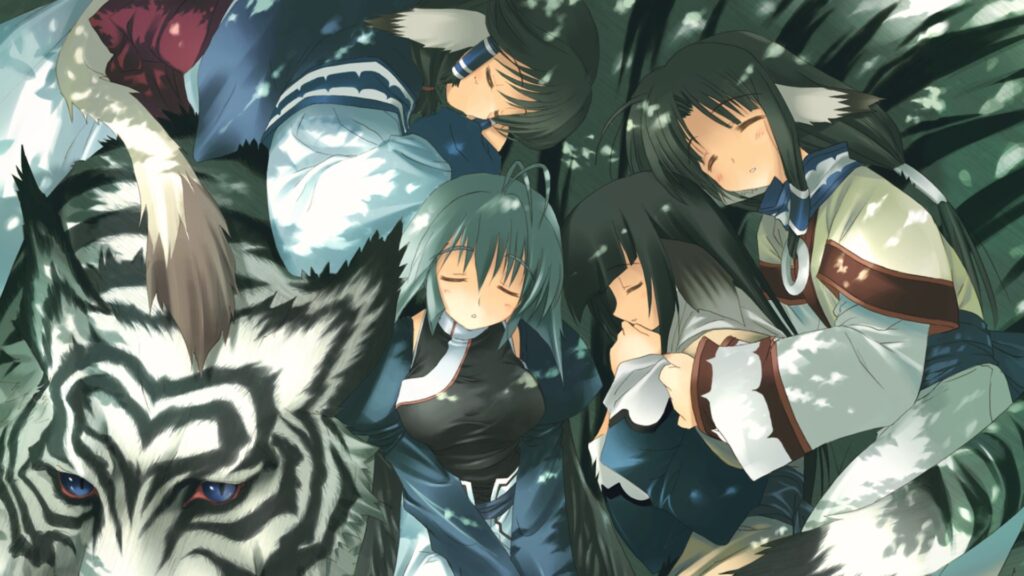
Utawarerumono is one of those classic franchises that I’ve heard of, but never actually played. This is largely because the first game has never officially been released in the West, despite the sequels receiving re-releases on PS4 and PC only a few years back. I had considered trying the series out back then, but the third game in particular can get a bit hard to follow if you aren’t already familiar with the overall story.
Luckily, the series was finally completed for gamers outside of Japan with last year’s release of Utawarerumono: Prelude to the Fallen on PS4. This remake is largely the same as the console re-release from 2006, and differs from the original PC version in a number of ways.
This includes a remixed soundtrack that uses some songs from the second and third games, a few new characters and extra content, touched up artwork and effects, a redone battle system based on the sequels; and sadly, the removal of the lewd scenes between Hakuowlo and his harem of fluffy-eared waifus.
Now that the entire trilogy is available on Steam, I decided to finally dive into this nearly 20-year old franchise. Some 30 hours or so later, I can finally see why Utawarerumono has such a devoted cult following, even without an official English version of the full series until very recently.
Utawarerumono: Prelude to the Fallen
Developer: AQUAPLUS
Publishers: DMM Games, Shiravune
Platforms: Windows PC (reviewed), PlayStation 4
Release Date: January 22nd, 2021
Players: 1
Price: $59.99
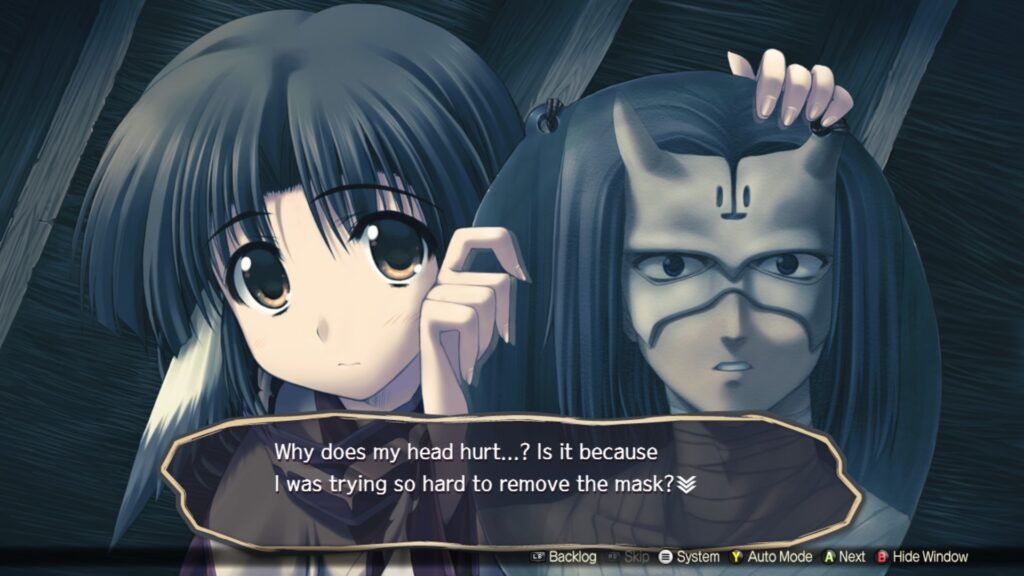
Utawarerumono: Prelude to the Fallen is set in a fantasy world that heavily draws from traditional feudal Japanese culture and folklore, specifically those of the Ainu people of northern Japan. While humans exist in the setting, the world is predominately populated by various tribes of people with fluffy ears and tails.
You play as Hakuowlo, a gravely injured man that is rescued by one such girl, named Eruruu. Her family- consisting of herself, her little sister Aruruu, and their grandmother Tuskur- nurse Hakuowlo back to health from the brink of death.
Unfortunately, Hakuowlo has no memories of his past life, but still retains some useful knowledge that he shares with the villagers to make their quaint rural community on the outskirts of civilization begin to prosper.
Just as Hakuowlo is becoming accustomed to his peaceful life with his new family and friends, their community’s prosperity attracts the attention of their nation’s greedy feudal lord, and his equally inept son. Their attempts to squeeze more taxes out of the poor village eventually leads to an unforgivable tragedy, and Hakuowlo is thrust into the uncomfortable position of leading a peasant revolt.
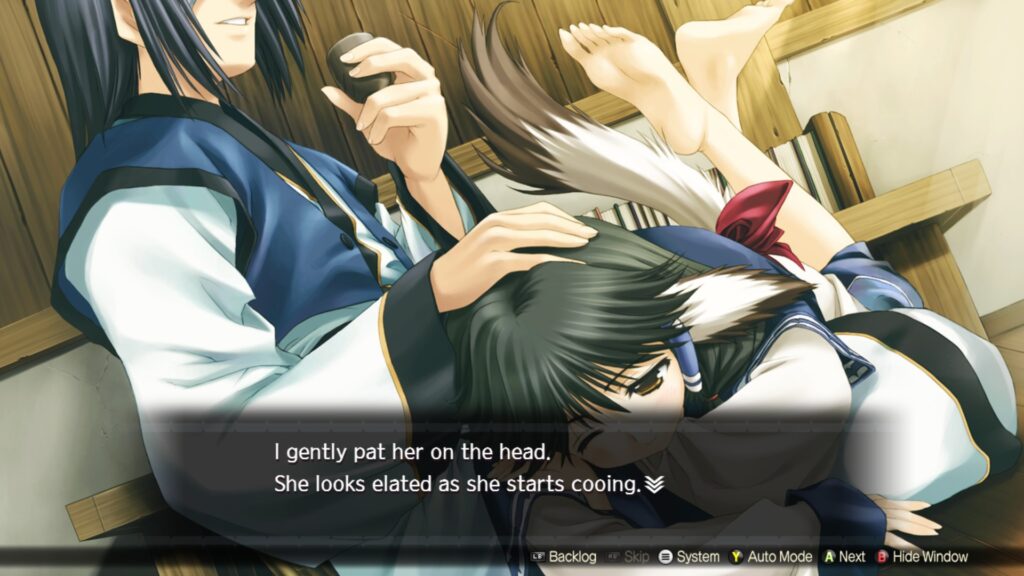
All of this happens within the first third of the game, and acts mostly as a prologue to the main storyline. That delves into political intrigue between the wider world, and Hakuowlo’s forgotten past gradually catching up with him. Getting into too many details beyond this will dip into spoiler territory, which we will avoid when talking about a game that is roughly 85% story and character development.
As a visual novel with JRPG elements, you will spend the vast majority of Utawarerumono‘s 30 to 40 hour runtime reading text. There is voice acting in the game, and some basic sound effects to emphasize actions, but it’s all in Japanese. So I hope you are ready to grab a glass of your favorite beverage, relax, and read for hours at a time.
The game is very linear, with most of the major story events unfolding without any prompts from the player. Between these major developments, you’ll have a chance to visit locations to watch side events.
These help to further develop the game’s rather large cast of characters, or simply provide drama or humor to break of the pace of the main story. It doesn’t really matter which of these events you view first though, so overall there is really no meaningful input from you during the game’s visual novel storytelling segments. Not that any of this is a bad thing, mind you.
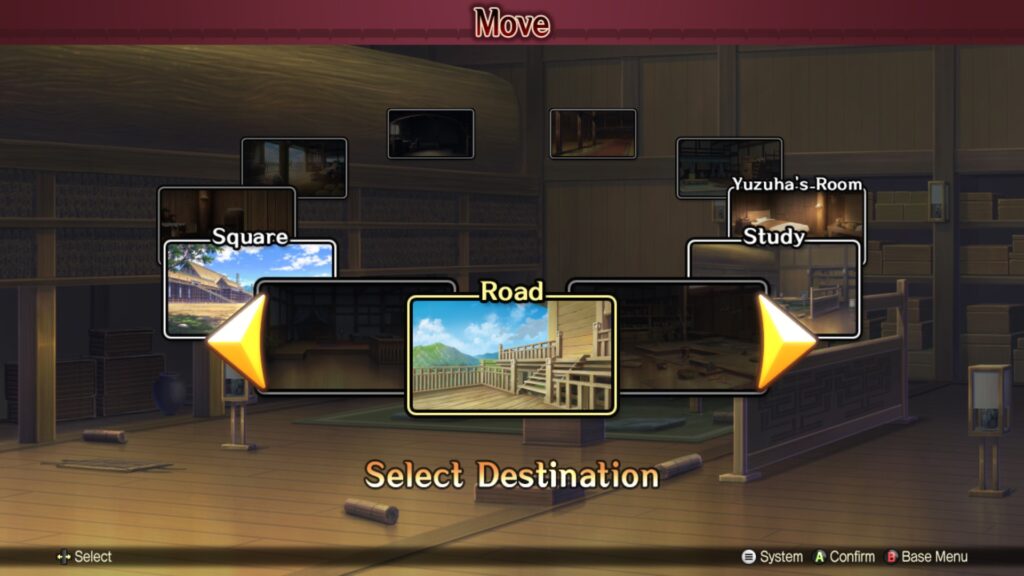
Utawarerumono has a great story with a huge cast of loveable characters that is enhanced by the game’s excellent soundtrack. Even many of the side characters get a decent amount of development and growth throughout the story; and the game does a fantastic job of juggling gut-wrenching tearjerker moments with comedy, romance, worldbuilding, and political intrigue.
I will say that one of the weaker elements of the story are its villains, of which you go through several of throughout the course of the game. The aforementioned greedy feudal lords you face off in the early parts of the game are hilariously inept, with motivations that are about on par with a hedge fund manager betting against stock on video game retail chains.
Luckily, these particular buffoons are out of the picture within the first 8 or so hours. There are other segments later on where the story slows down a bit as well, but luckily the character development and comedic antics are usually enough to keep you entertained during these lulls in major plot developments.

As I briefly mentioned earlier, one sad exclusion from the plot are the lewd scenes. This won’t come as any surprise to fans of the series, considering the ero scenes were removed in the first re-release, and haven’t appeared in any of the sequels. The developers are on record saying the sex scenes were there because they didn’t think a visual novel would sell back in 2002 without them.
While the scenes themselves only consist of a few brief minutes with each of the main girls in a roughly 30+ hour game, I actually kind of recommend you go try to track them down on the internet because they do contain some character development. Not enough that you’d be lost without seeing them, but just enough that you might want to know what happened.
The sex scenes are still canon, even if they aren’t actually shown in this version of the game. The buildup to these scenes are all still in the game, it just conveniently cuts away before the kimonos start being pulled open. Besides, one of these hand-holding sessions in particular kind of has to happen for the sequels to even exist.
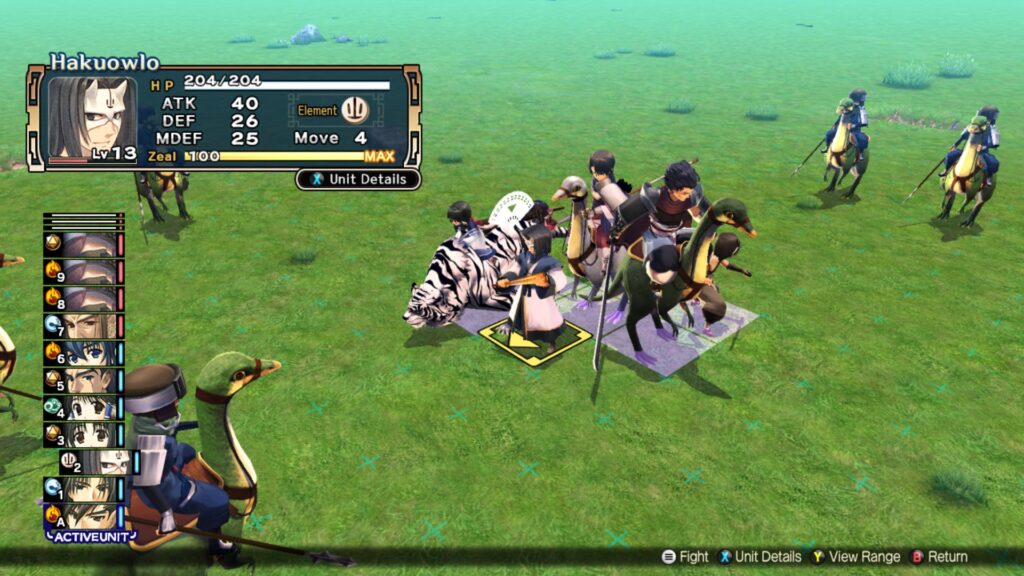
While the Utawarerumono games are about 80% visual novel, they do contain some tactical turn-based battles as well. The battle mechanics are fairly straightforward and basic, and likely won’t be terribly challenging to turn-based tactics veterans. The game also lets you rewind your turns a decent ways back, so even if you are terrible you shouldn’t get stuck for long on any particular encounter.
Each battle allows you to bring a set number of characters, typically about seven or eight, with specific characters being must-brings. You and the AI take turns moving your units around a grid-based battlefield, with turn order being determined with a basic initiative system for each unit. Each character has an elemental affinity that works about how you’d expect, with characters taking more or less damage from attacks of elements they are weak or strong against.
You gain damage bonuses for attacking a unit’s side or rear as well. While the maps are littered with a few pieces of destructible terrain, the game doesn’t feature any concepts like cover or blocking line of sight. There are no percentages to hit, just some spells and abilities that can bolster a unit’s defensive stats. There are a handful of status aliments as well, though they don’t really play a role in most encounters.
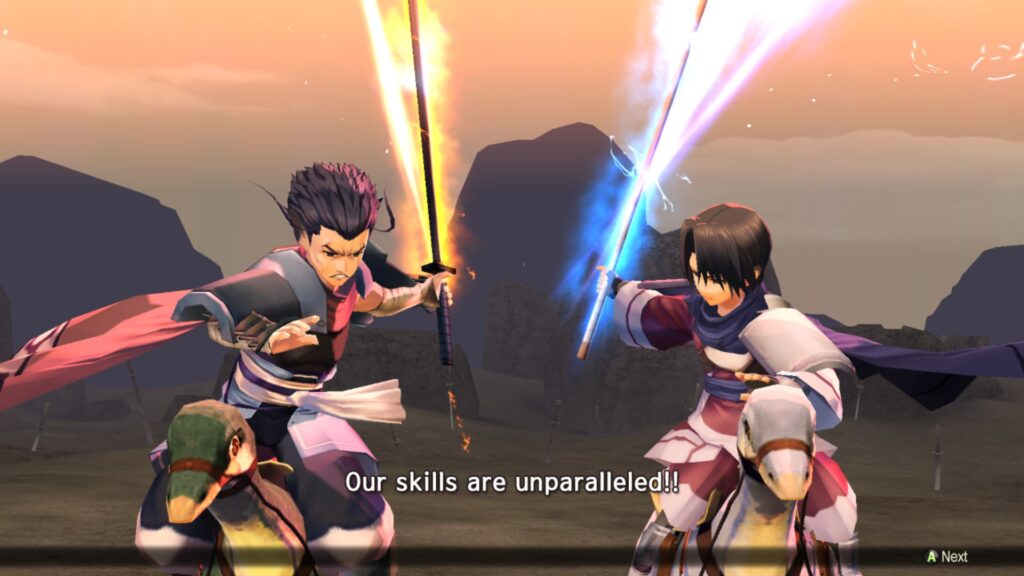
As your characters level up, they unlock extra attacks that gradually form a whole combo chain. A perfectly-timed button press for each attack in the chain yields the character extra Zeal, which is used to perform powerful final strikes and co-op attacks. Many characters also have additional active abilities with a set number of uses per battle, like Eruruu’s medicinal concoctions, or Ulthury’s magic spells.
In addition to the standard chain attacks, co-op combos, and special abilities, characters will can learn passive skills. Some of these including giving adjacent characters extra Zeal at the start of their turn, gaining damage reduction based on their current Zeal, or even a chance to dodge attacks. Rounding out each character’s kit is a slot for armor or equipment that boosts their stats, and two slots for consumables.
Characters gain experience after performing attacks or actions, and as rewards for finishing the battle. Characters that don’t participate gain a little experience as well so they don’t get left too far behind, but they don’t gain Bonus Points.
These are awarded to characters that took part in a battle, and are used to increase their Attack, Defense, and Magic Defense stats. Besides that, there really isn’t any character building, as any new abilities they learn are acquired automatically upon hitting certain levels.
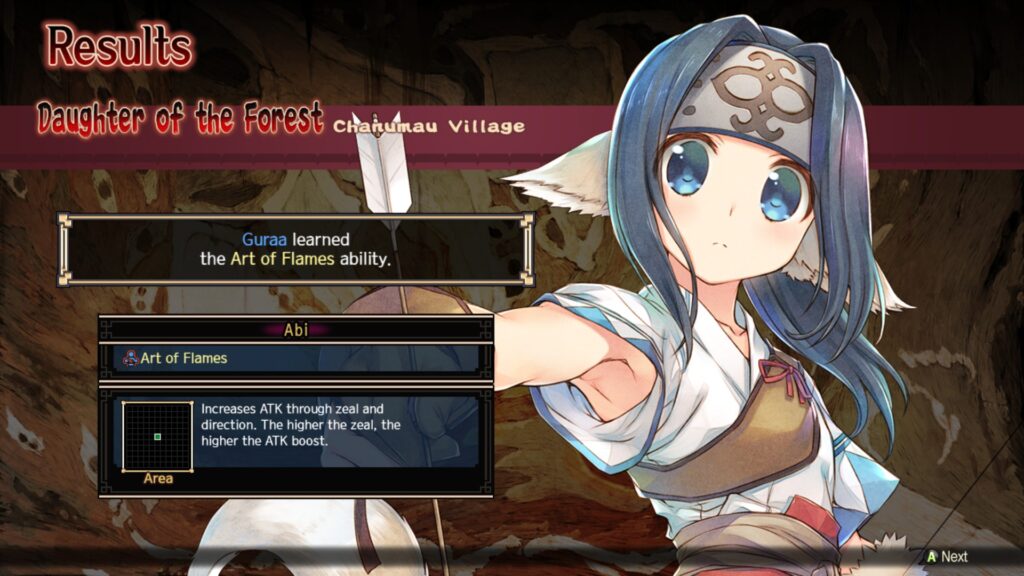
You can always revisit previous fights in the free battle mode, or take on side challenges in the training mode. Doing these battles will reward you with extra EXP, BP, and valuable items. In fact, there is even a secret stage that is only unlocked if you collect every item in the main story battles.
The ability to freely grind whenever you want can be useful in the off chance that you find a battle too difficult, but if you have any experience with turn-based tactical RPGs, then you probably won’t find yourself in a position where you feel like you need to grind to prep for a fight.
While the combat system is admittedly pretty basic, that isn’t to say that it isn’t fun. There are plenty of cool and flashy attacks that are fun to watch, even if the graphical style is pretty dated, and the core system is good enough to scratch your itch for some turn-based tactical combat. The AI is also fairly decent, and won’t hesitate to focus on your squishy support characters if given the chance.
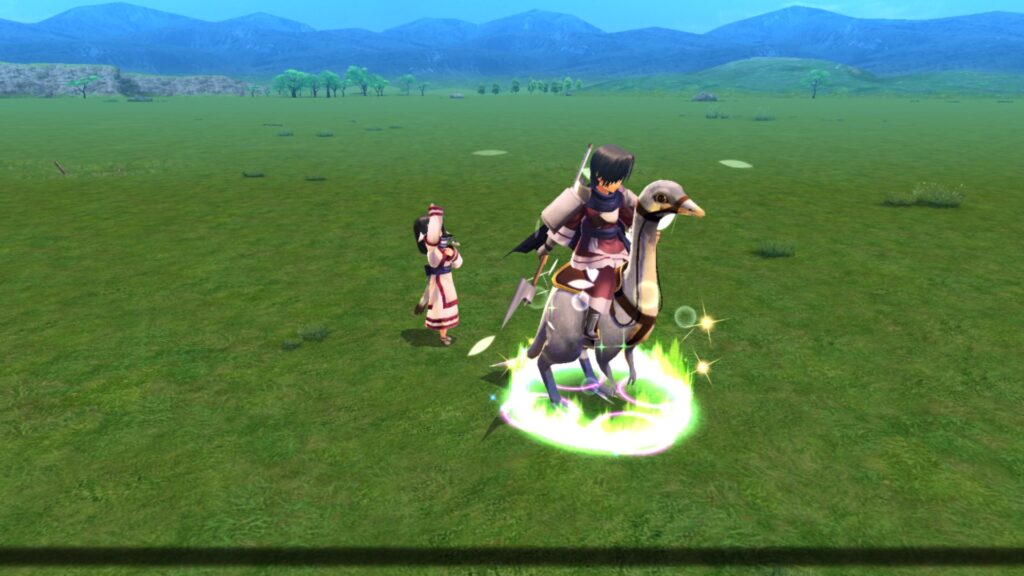
From a technical standpoint, I do have some issues. The game is locked at 720p/30, so it has a stretched out, blurry look when playing on any high resolution monitor from the past 14 years. The 30 FPS lock isn’t a huge deal, since most of the game is reading text on top of still images with the occasional special effect, and the battles are all turn-based. Still, I would have liked it if the game was higher resolution and ran in a framerate from this decade.
Another complaint is that the game isn’t a particularly meaty remake or remaster. Aside from the revamped battle system to make it more in line with the sequels and perhaps some touched up artwork and sound assets, a lot of the game is largely unchanged from prior versions.
Quite a few people might scoff at the idea of charging $60 for a pretty basic remake of a 20-year old visual novel, and that’s before you get into the fact that the game launched with $32 of DLC. Admittedly, the DLC isn’t really anything worth buying, as it’s all just unlocking characters from the sequels for use in free battles and training missions.
The battles have such small unit caps that you can’t even bring all the characters anyway, so there isn’t much point in buying more unless you just really want to see characters from the first game team up with characters from the sequels. All that being said, I think the game is completely worth the price of entry.
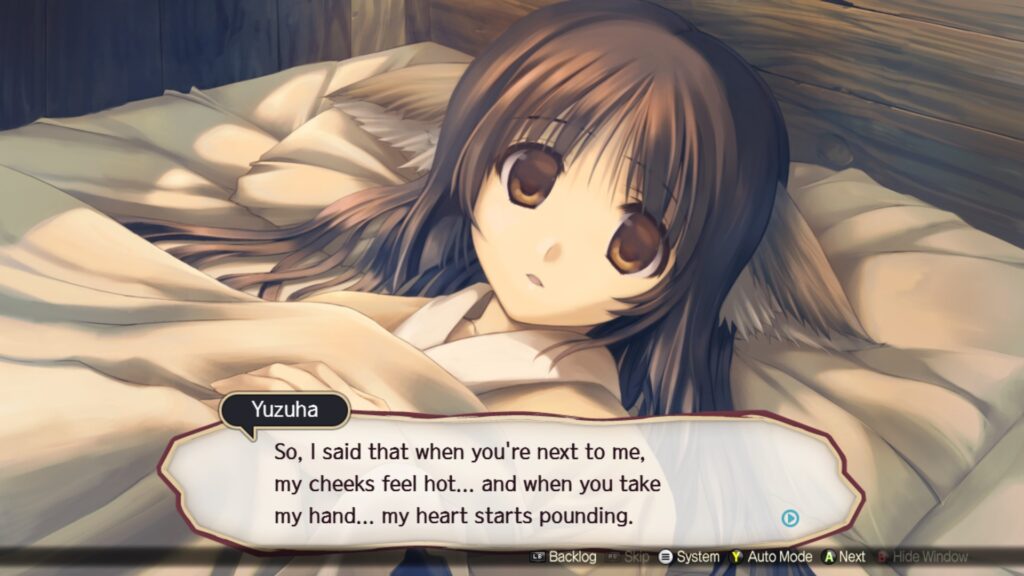
While it falters in some areas, Utawarerumono: Prelude to the Fallen is a highly enjoyable experience. It takes a while for the story to get going, but with its great cast of characters and compelling plotlines, it’ll eventually have you hooked by time you reach the second act. The overall presentation is great, with memorable art and character designs backed up by a fantastic soundtrack.
The game manages to strike just the right balance between comedic and heartwarming slice of life, to gut-wrenching tragedy that dips into some heavy themes like the horrors of war and coming to terms with one’s own mortality.
I can see why the series is so revered, and from what I’ve heard, the first game is actually the weakest in the trilogy. That makes me want to immediately jump into the sequels to see how the story continues.
It is a bit of a shame that the remake feels a bit lazy with its 720p max resolution and 30 FPS cap, but I suppose we Westerners should be happy that the first game is finally even available outside of Japan in the first place.
If you are in the mood for a hefty visual novel full of compelling characters and don’t mind that the combat mechanics aren’t particularly deep, then you’ll definitely want to give the Utawarerumono franchise a shot.
Utawarerumono: Prelude to the Fallen was reviewed on Windows PC using a review code provided by DMM Games. You can find additional information about Niche Gamer’s review/ethics policy here.